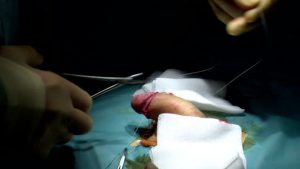In order to ensure a safe and effective circumcision clinic Sydney, it is important to know the process of anesthesia for circumcision. The doctor will check the child’s blood pressure, temperature and oxygen levels, then insert a thin IV. After the IV is in place the penis will need to be cleaned and sutured. The doctor will monitor the child’s heart rate and inject the ring or dorsal Penile nerve.
During the procedure, the newborn will feel numb due to the local anesthetic, which is a combination of 1 or two percent lidocaine or 0.5 percent bupivacaine. This is the preferred choice for those with a history of bleeding disorders, as it provides a rapid and reliable anesthetic. To ensure that the anesthetic doesn’t affect the baby’s blood pressure, the doctor will also check it.
To ensure smooth circumcisions, surgical anesthesia should be used. Although there are several precautions involved, the majority of patients recover quickly and with minimal pain. The doctor must ensure that the patient has no problems during the procedure. If the child is suffering from an underlying heart problem, he or she will need to undergo a comprehensive evaluation by a specialist. There are risks involved with the procedure, which will be discussed during the preoperative consultation.
You should perform circumcision anesthesia with care and precision. If the patient is experiencing a high level of anxiety, it is imperative that the anesthesia will be effective and safe. It is important to find a doctor who is familiar with this type anesthesia. This will ensure that the procedure goes smoothly. A good doctor will ensure that the procedure runs smoothly. This will also ensure that the baby feels comfortable, and reassured.
A pediatrician will generally perform a circumcision on a baby with a history of a neuromuscular condition. The doctor will also administer antibiotics as well as sedatives. These two agents are necessary for a safe and effective procedure. In some cases, the patient will need to have a complete medical history taken before the procedure. A steroid may also be recommended if the patient has a history with coagulopathy or a heart problem.
The procedure should be performed while the baby remains awake. A pediatrician should administer a local anesthetic. Anesthesia will not make the child sleep, but it will help reduce the risk of injury to the penis. Anesthesia will make the procedure safer, easier, and reduce the risk of infection. For older children, the procedure is possible at any age. Additionally, it is best for the baby’s safety and comfort to wait until the baby is stable.
Another common method to anesthetize a circumcision is using ultrasound guidance. This method will minimize the risk of complications and will ensure a painless and smooth circumcision. Anesthesia will protect the baby’s vital organs and prevent complications. However, the risk of hemorrhage is the biggest complication of this procedure. This is why the patient should not undergo anesthesia for a circumcision without ultrasound guidance.
Combination of a caudal blocking and a lidocaine injectable is the most common form of anesthesia for a circumcision. Both of these methods can cause pain post-operatively. It is not recommended to inject even a small amount of lidocaine, as this can cause serious complications such as laryngospasm or respiratory infections. The most common anesthesia for a circumcision procedure is the laryngeal.
Anaesthesia for circumcision can cause discomfort for babies. In the study, a pediatrician used dorsal penile nerve blocks in infants who were subject to the procedure. These methods were ineffective, and the research team concluded the anaesthesia could increase the child’s chance of perinatal mortality. There are many complications associated with anesthesia to circumcise, and the most significant is anesthesia.

